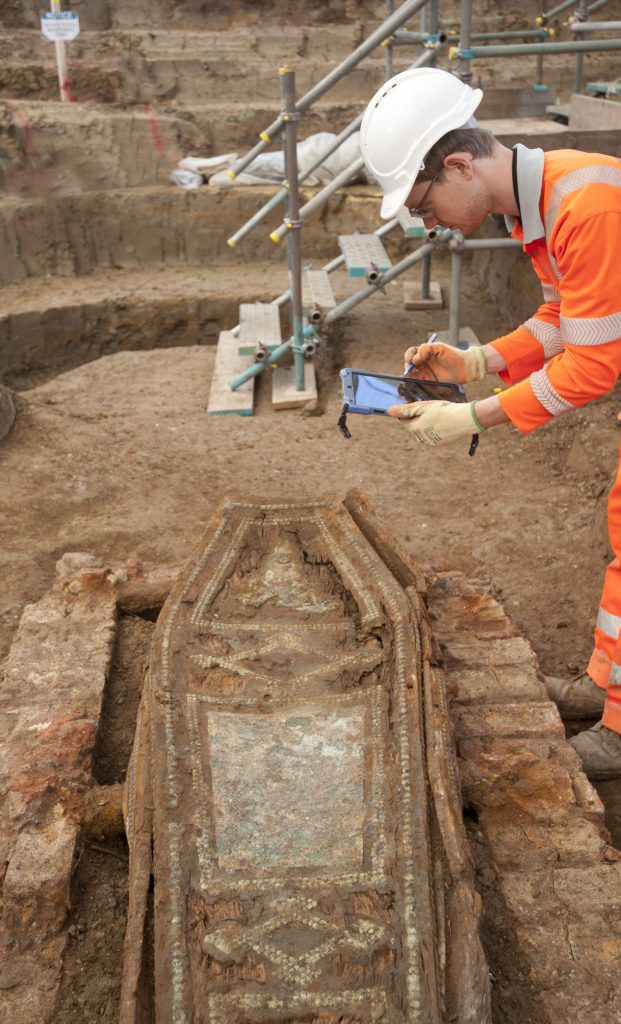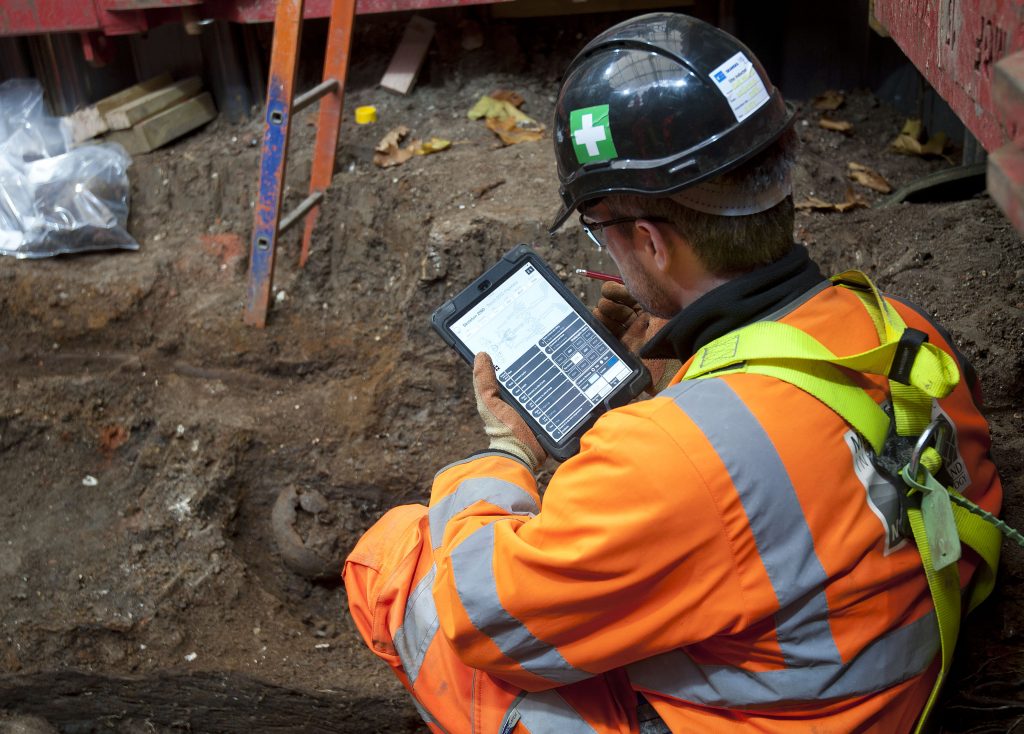Yesterday evening, the team behind the St James’s burial ground excavation for HS2, celebrated at construction industry awards, the CN Awards, as finalists in the category Best Use of Technology.
The multi-disciplinary team – made up of archaeologists from MOLA Headland, expert engineers, archaeologists and construction professionals from Costain Skanska Joint Venture and Historic Environment and infrastructure experts from HS2 – is undertaking the largest archaeological excavation of a burial ground in the UK, at what will be the new HS2 railway terminus at Euston.
 The site of a significant 18th and 19th century burial ground for the Parish of St James’s Piccadilly, approximately 45,000 skeletons are being carefully hand excavated.
The site of a significant 18th and 19th century burial ground for the Parish of St James’s Piccadilly, approximately 45,000 skeletons are being carefully hand excavated.
Recording of archaeological data during an excavation is traditionally captured using pro-forma paper record sheets. Working with a specialist software company, our experts have developed an app-based digital recording system whereby archaeologists working on site enter data records directly onto tablets.
Funding from HS2’s Innovation Fund was procured by principal contractor CSjV who championed our digital recording system. This allowed our data specialists to adapt the recording system to meet the specific needs of the HS2 archaeology programme, principally large-scale excavation of burial grounds.
This is the first time on-site digital archaeological recording has been implemented on such a massive scale. The size of the project means there are considerable benefits to applying what is a streamlined, time-efficient and highly accurate system.
The digital innovation has improved the quality of archaeological data management for the project and simplified the colossal job of archiving and sharing this mass of data. Having such high-quality data means specialist archaeological researchers can interrogate and interpret the data in new ways, enhancing the impact of the on-going HS2 Historic Environment research.
The digital recording system is also being used to train our archaeologists in fieldwork methodologies and the app is continually being modified to respond to new insights and best practice to ensure optimum data quality.
The success of this work with CSjv has led to the digital innovation being rolled out across the line of route and has also been used to record the archaeology of Park Street burial ground in Birmingham, another significant HS2 site, allowing for interpretation and comparison of data across this hugely significant and complex archaeological programme.
The archaeological programme at St James’s Gardens in Camden, London, is being carried out by our experts on behalf of Costain-Skanska JV for HS2 Ltd. To find out more about the programme visit www.hs2.org.uk or for information on what is going on in your local area or how you can get involved head to https://hs2ineuston.commonplace.is/.

0 Comments
Leave A Comment